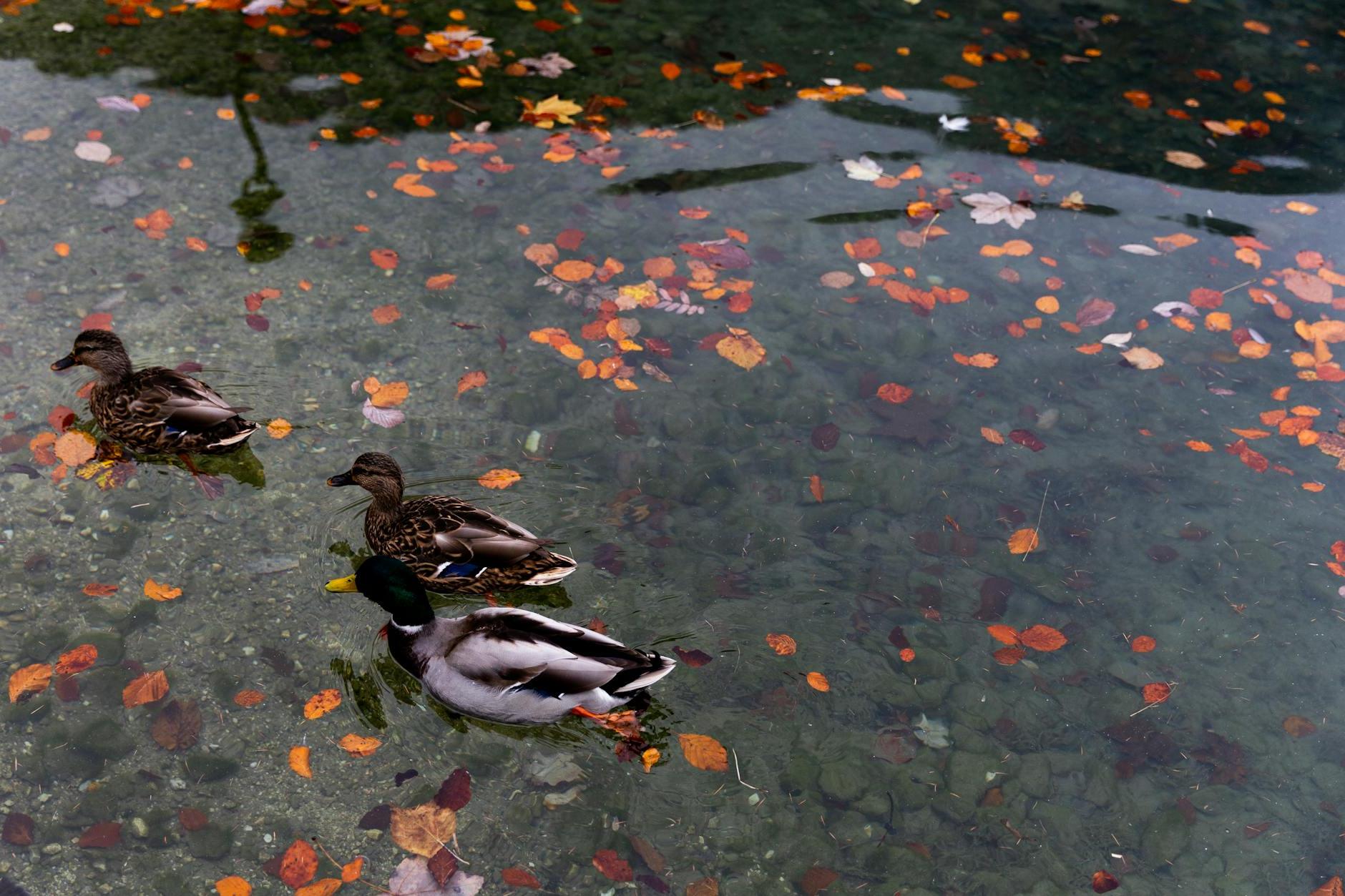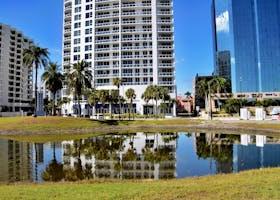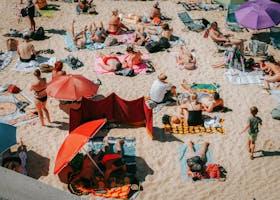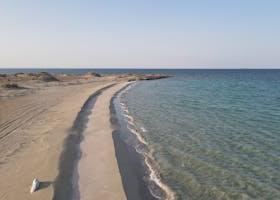Top 10 Must-See Spots in Everglades National Park, Florida
Posted on June 4, 2024 • 9 minutes • 1883 words
Table of contents
- 10 best things to see in Everglades National Park
-
Frequently Asked Questions
- 1. What is the best time of the year to visit Everglades National Park?
- 2. Should I rent a car in Everglades National Park?
- 3. What are different ways to get to Everglades National Park?
- 4. Are there things to do with children in Everglades National Park?
- 5. Is Everglades National Park safe to travel to?
Welcome to Everglades National Park, Florida, a natural wonder like no other! Known for its stunning landscapes, diverse wildlife, and unique ecosystems, the Everglades is a paradise for nature lovers. Whether you’re here for hiking, bird-watching, or just soaking in the beautiful scenery, there’s something for everyone in this majestic park. The best time to visit is during the cooler, drier months from November to March, when the weather is perfect for outdoor activities. However, don’t worry if you’re visiting at another time of year – the Everglades offers exciting experiences all year round. Let’s dive into the top 10 must-see spots you won’t want to miss!
10 best things to see in Everglades National Park
10. Ernest F. Coe Visitor Center
When visiting Everglades National Park, make sure you stop by the Ernest F. Coe Visitor Center. Located at the park’s main entrance off State Route 9336 in Homestead, it’s the perfect starting point for your adventure. Here, you’ll find helpful rangers, informative exhibits, and maps to plan your day. Don’t miss the educational displays and short films that explain the unique ecosystem of the Everglades. The staff can also update you on wildlife sightings and trail conditions. With restrooms, a gift shop, and plenty of parking, it’s a convenient and informative stop to enrich your visit.
9. Gumbo Limbo Trail
Visiting the Gumbo Limbo Trail at Everglades National Park is a must for nature lovers! This short, easy trail takes you through a beautiful, shaded forest filled with tropical hardwood trees, including the gumbo limbo tree with its unique peeling bark. It’s a perfect way to experience the lush, diverse plant life of the Everglades up close. To find the trail, head to the Royal Palm Visitor Center, which is just a short drive from the park’s main entrance at Homestead. Once there, you’ll see clear signs pointing you to the trailhead. Keep an eye out for wildlife like birds and butterflies along the way, and don’t forget to bring water and bug spray for a comfortable hike!
8. Flamingo Visitor Center
Visiting the Flamingo Visitor Center in Everglades National Park is a must-do! This spot offers stunning views, beautiful trails, and a chance to see amazing wildlife like manatees, crocodiles, and flamingos. To get there, start from the park’s main entrance and follow the signs for about 38 miles down the scenic Main Park Road. Look out for the vibrant ecosystem as you drive. Once you arrive, check out the visitor center for maps and tips, and don’t miss the boat tours for a closer look at the water’s beauty. Remember to bring sunscreen, insect repellent, and plenty of water to stay comfortable during your visit.
7. Pa-Hay-Okee Lookout Tower
If you’re visiting Everglades National Park, make sure to stop by the Pa-Hay-Okee Lookout Tower for an unforgettable view. This wooden observation deck offers sweeping vistas of the vast sawgrass prairies, giving you a true sense of the park’s unique landscape. To get there, drive about 21 miles west from the Ernest F. Coe Visitor Center along the Main Park Road. Follow the signs for the Pa-Hay-Okee Overlook; there’s a short, easy walk from the parking area to the tower. Keep an eye out for wildlife, as the Everglades are home to alligators, wading birds, and much more. Remember to bring sunscreen and water, as there is little shade on the tower, and stay on the designated paths to protect the delicate ecosystem. Enjoy your visit and don’t forget your camera!
6. Long Pine Key
Visiting Long Pine Key in Everglades National Park is a must! It’s a peaceful spot where you can enjoy beautiful pine forests and clear blue lakes. Getting there is easy. Simply head to the park’s main entrance, and it’s about a 7-mile drive from the Ernest F. Coe Visitor Center. You can hike, camp, or have a relaxing picnic. Don’t forget your binoculars; this area is great for bird watching. Keep an eye out for interesting wildlife and always stay on marked trails to stay safe. Enjoy the natural beauty!
5. Shark Valley
If you’re visiting Everglades National Park, make sure to stop by Shark Valley. This part of the park offers a unique way to see the diverse wildlife and stunning landscape of the Everglades. At Shark Valley, you can take a tram tour, bike, or walk along the 15-mile loop road, giving you a close view of alligators, birds, and beautiful wetlands. To get there, drive about an hour west of Miami on the Tamiami Trail (U.S. Highway 41) until you see the Shark Valley entrance. Be sure to bring plenty of water, sunscreen, and insect repellent, and keep an eye out for sudden changes in weather. Don’t forget your camera—you’ll want to capture the breathtaking scenery!
4. Mahogany Hammock
When you visit Everglades National Park, Mahogany Hammock is a must-see spot. This beautiful area is known for its lush, tropical hardwood trees and winding boardwalk trail that lets you explore the unique ecosystem up close. To get there, simply drive about 20 miles from the park’s main entrance along the main park road. Look for signs directing you to Mahogany Hammock. As you walk through, keep an eye out for the huge mahogany trees, some of the oldest in the United States, and listen for the sounds of colorful birds and other wildlife. Don’t forget your camera and insect repellent – you’ll want to capture the beauty and be prepared for the park’s outdoor elements!
3. Nine Mile Pond
When you visit Everglades National Park, be sure to check out Nine Mile Pond. This spot is perfect for nature lovers, especially if you enjoy canoeing or kayaking. The water here is calm and surrounded by beautiful wetlands, giving you a true taste of the Everglades’ unique ecosystem. To get there, drive down the main park road until you see signs for Nine Mile Pond. It’s easily accessible, with a parking area nearby. Keep an eye out for alligators and wading birds, which are common sights. Don’t forget to bring plenty of water, sunscreen, and insect repellent to make your visit enjoyable.
2. Anhinga Trail
When visiting Everglades National Park, you simply can’t miss the Anhinga Trail. This easy and accessible trail is perfect for seeing the best of the park’s wildlife up close. You’ll spot alligators, herons, and the trail’s namesake, the anhinga bird, among others. To get there, head to the Royal Palm Visitor Center, just a short 4-mile drive from the park’s main entrance at Homestead. Remember to bring water, sun protection, and your camera. Stay on the trail’s boardwalk to ensure your safety, especially around the alligators. Happy exploring!
1. Royal Palm Visitor Center
When visiting Everglades National Park, make sure to stop by the Royal Palm Visitor Center. It’s a great place to start as it offers you a wealth of information about the park’s unique ecosystem and wildlife. To get there, simply head about four miles from the main park entrance at Homestead. The Visitor Center is a treasure trove for nature enthusiasts, featuring easy walking trails like the Anhinga Trail and the Gumbo Limbo Trail. These trails are perfect for spotting alligators, turtles, and a variety of birds up close. Don’t forget your camera, binoculars, and insect repellent, as the Everglades can be quite buggy! This spot is especially great for families and first-time visitors wanting to get a real taste of what the Everglades has to offer.
Frequently Asked Questions
1. What is the best time of the year to visit Everglades National Park?
The best time to visit Everglades National Park is during the dry season, which runs from November to April. During these months, you can enjoy pleasant weather, fewer mosquitoes, and higher chances of spotting wildlife like alligators, birds, and manatees. The temperatures are cooler and the humidity is lower, making your visit more comfortable. Although the wet season, from May to October, has its own beauty with lush landscapes and fewer crowds, it often brings heavy rains and swarms of mosquitoes. Visiting during the wet season can also be more economical, as some accommodations and tours may offer discounts.
2. Should I rent a car in Everglades National Park?
Renting a car in Everglades National Park can be a good idea if you want the freedom to explore at your own pace. The park has well-maintained roads, and traffic is usually light, making driving quite easy. Parking spots are available at major attractions like the Anhinga Trail and Flamingo Visitor Center, but they can fill up during peak times. Public transport options are limited, so getting around without a car can be challenging. Taxis or ride-sharing services are also scarce and can be expensive. Overall, having a car gives you the most flexibility to enjoy all that the Everglades has to offer.
3. What are different ways to get to Everglades National Park?
There are several ways to get to Everglades National Park, making it accessible for different types of travelers. If you are flying, the closest airports are Miami International Airport and Fort Lauderdale-Hollywood International Airport; both are within a two-hour drive to the park. For those preferring public transport, you can take a bus from cities like Miami, but note that services are limited and you may need a taxi or rideshare for the final leg of your journey. Trains aren’t a direct option, but you can use the Amtrak to Miami or Fort Lauderdale and then switch to a bus or car. If you are driving, it’s quite straightforward: from Miami, take the US-41 or the Florida State Road 9336 straight to the park; from Fort Lauderdale, it’s a similar route using I-75 or US-41. From other major cities like Orlando, you would drive south via the Florida Turnpike or I-75, and then follow signs to the park. No matter how you arrive, the journey to Everglades National Park promises stunning scenery and an adventure in itself.
4. Are there things to do with children in Everglades National Park?
Yes, there are plenty of things to do with children in Everglades National Park! Kids will love exploring the park’s unique wildlife through ranger-led programs and nature walks. You can take them on a boat tour to see alligators and birds up close, or rent a kayak for a fun paddle through the mangroves. The Anhinga Trail is an easy walk where your family can spot fish, turtles, and even the park’s famous alligators. Don’t miss the Shark Valley Visitor Center; it has educational exhibits and an observation tower that offers amazing views. It’s a great place for kids to learn and have an adventure!
5. Is Everglades National Park safe to travel to?
Yes, Everglades National Park is generally safe to travel to. The park is well-maintained, and the staff prioritize visitor safety. Crimes such as petty theft can occur, especially in parking lots and crowded areas, so it’s important to remain vigilant. Keep your valuables out of sight, lock your car, and be aware of your surroundings. Like any popular destination, it’s wise to take standard precautions such as not leaving your belongings unattended and staying alert. Overall, by following these common-sense measures, you can have a safe and enjoyable visit to the beautiful Everglades National Park.




